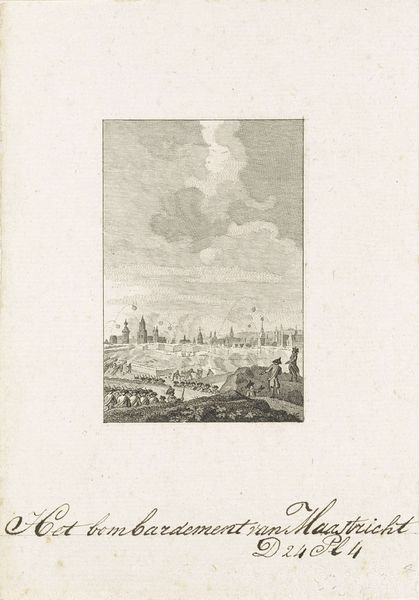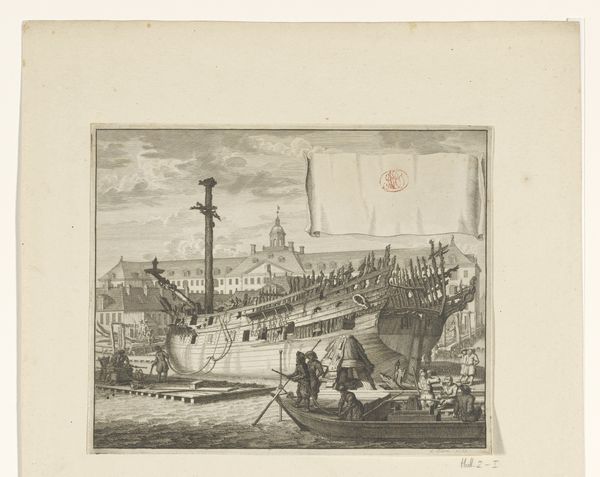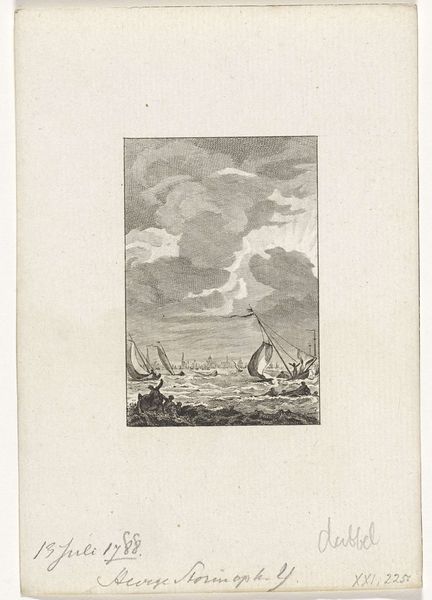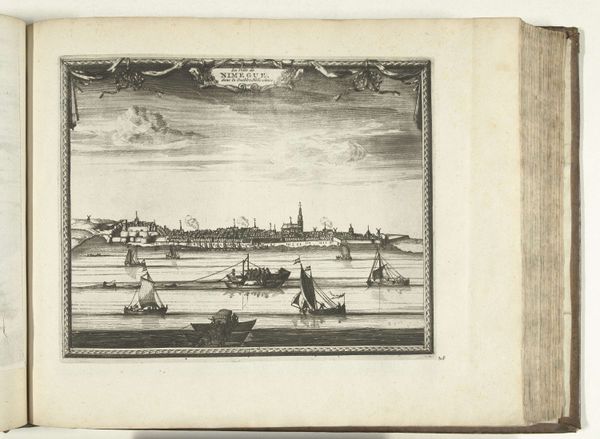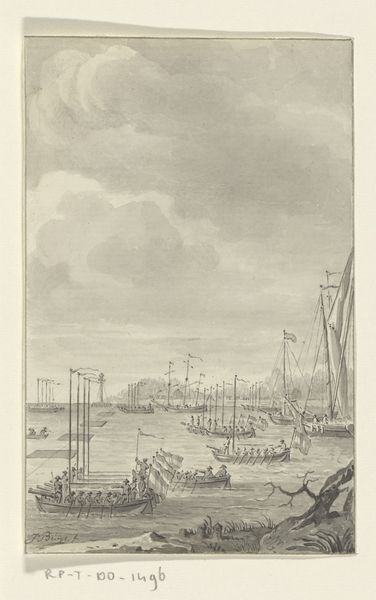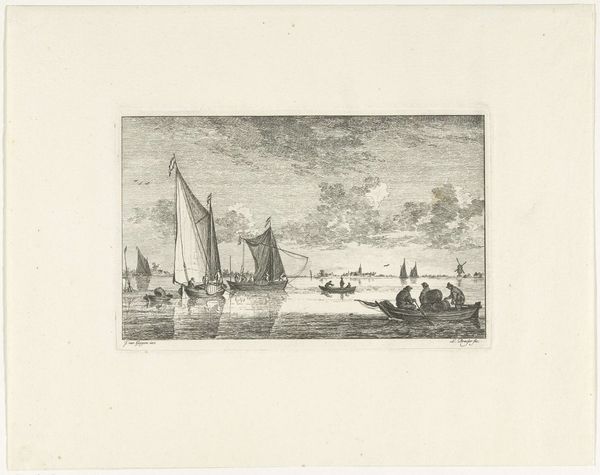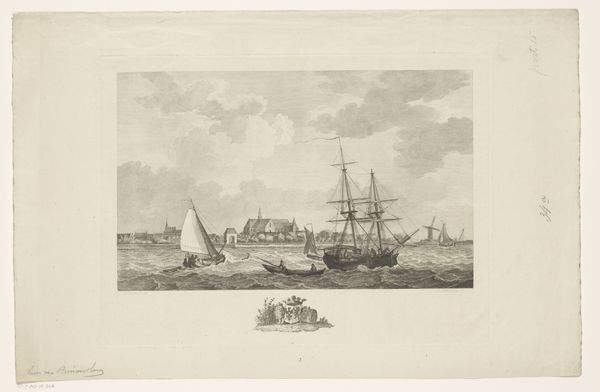
Fransen beschieten de vluchtende troepen op de Gierbrug, 1794 1783 - 1795
0:00
0:00
reiniervinkeles
Rijksmuseum
print, engraving
# print
#
landscape
#
history-painting
#
engraving
Dimensions: height 160 mm, width 100 mm
Copyright: Rijks Museum: Open Domain
Curator: What we have here is an engraving by Reinier Vinkeles, dating from 1783 to 1795, titled "Fransen beschieten de vluchtende troepen op de Gierbrug, 1794", or "The French Shooting at the Fleeing Troops on the Gier Bridge, 1794". Editor: The eye is immediately drawn to the crowded boat, but I feel a tension between the clarity of the landscape elements and the smoky chaos in the foreground, giving the print an off-kilter feel. Curator: That tension, I think, reflects the historical moment quite well. It depicts a specific event during the French Revolutionary Wars, when French forces were advancing into the Netherlands. The print highlights the chaos and violence inherent in that advance. Editor: Indeed, but observe how Vinkeles uses line and shadow. The meticulous depiction of the architectural forms creates a sense of stability, a grid against which the frenetic activity of fleeing soldiers is played out. This interplay between order and disorder is quite striking. Curator: This particular image gained significance due to the political climate. It played into the prevailing narratives of Dutch resistance against foreign invasion. Such prints circulated widely, reinforcing patriotic sentiment and serving as propaganda. Editor: And consider how Vinkeles manages to represent depth. The artist cleverly guides our gaze from the explosions and fleeing figures on the riverbank to the detailed architecture on the opposite shore and ultimately the cloudscape beyond, even though they’re all in the same monochromatic shade. It brings cohesion and rhythm, and emphasizes the impact of war on civilian landscapes. Curator: This print exemplifies how art becomes deeply enmeshed with historical events and sociopolitical motivations. Beyond pure aesthetics, it operates within networks of power, dictating what is seen and remembered. Editor: Well, it shows us the artistic tools used for that process. Vinkeles invites close formal observation which highlights, in turn, the drama inherent in conflict. Curator: I've gained new perspectives on the social weight images carried and continue to carry. Editor: And for me, appreciating its structure is key to decoding its purpose and enduring appeal.
Comments
No comments
Be the first to comment and join the conversation on the ultimate creative platform.


